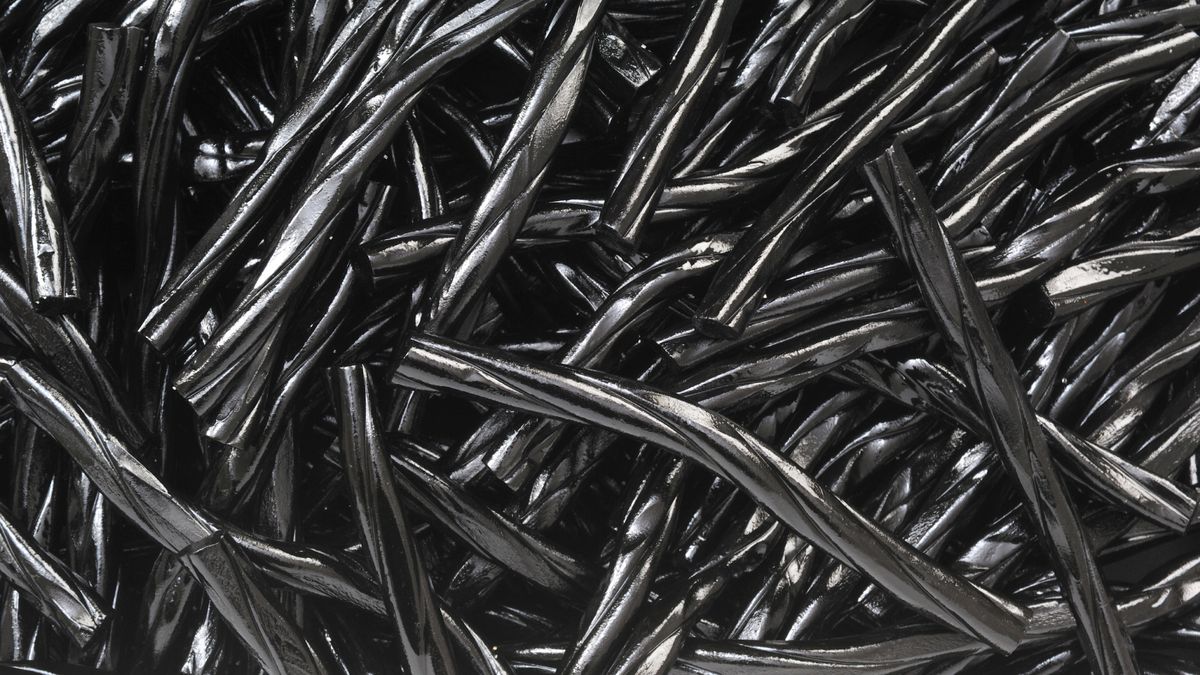Licorice is a divisive candy — people either love it or hate it. Traditionally made with the root of the licorice plant (Glycyrrhiza glabra), this soft, chewy candy boasts a main ingredient that has been used to soothe sore throats and aid digestion since ancient Greece.
But licorice lovers may not realize that the candy has the potential to mess with certain organs and medications. If it’s eaten regularly, in large quantities or with certain drugs, licorice can cause serious side effects. (That’s assuming the candy is flavored with real licorice root and not a similar-tasting ingredient, such as anise.)
So how does licorice affect the body and interact with medications?
One of the culprits is glycyrrhizin (pronounced gliss-er-EYE-zin). This compound, found in licorice, can cause the kidneys to retain too much water and sodium while losing too much potassium, Joan Salge Blake, a nutrition professor and registered dietitian nutritionist at Boston University, told Live Science in an email.
Related: How does grapefruit interact with drugs?
Glycyrrhizin blocks an important enzyme in the kidneys — called HSD-11β — which normally prevents the stress hormone cortisol from disrupting kidney function. The enzyme essentially diffuses cortisol by converting it into another hormone, called cortisone. Without this enzyme, cortisol latches onto receptors in the kidneys, causing the organ to hold on to water and sodium and spew out potassium.
When the kidneys retain sodium and water, the volume of blood circulating in the body increases. That means more fluid pushes against the walls of blood vessels, resulting in high blood pressure, or hypertension. This effect can directly counteract the action of blood-pressure-lowering drugs, such as ACE inhibitors, reducing their effectiveness. These interactions affect drugs like captopril (brand name: Capoten).
Another interaction can occur with diuretics, also known as “water pills.” These medications are often prescribed to lower blood pressure by removing excess fluid from the body — in short, they make you urinate more.
One side effect is that they make the body lose potassium, an important mineral that helps keep the heart and muscles working well. Licorice also makes the body lose potassium, so consuming licorice and diuretics together can lead to dangerously low potassium levels, called hypokalemia. Symptoms include muscle weakness, fatigue, and, sometimes, serious heart problems.
Low potassium levels driven by licorice can also increase the risk of side effects from digoxin (brand name: Lanoxin), a drug used to treat heart conditions like atrial fibrillation, or AFib, and heart failure. Digoxin changes the concentrations of minerals in heart cells by blocking a specific pump, and this indirectly causes more calcium to stay trapped inside the cells. The extra calcium makes the heart muscle contract with more force, helping it pump blood more effectively.
Normally, potassium competes with digoxin at the pump it targets, preventing the drug from exerting too strong of an effect. However, when potassium levels in the body are low, digoxin binds more strongly to heart cells, with toxic results.
Related: Does activated charcoal interact with medication?
This happened to an older man whose case was reported in the journal Cardiology. The man experienced digoxin toxicity after using a herbal laxative that contained licorice. The licorice lowered his potassium levels, enabling digoxin to act too powerfully and leading to congestive heart failure.
Besides the medications mentioned above, many other drugs can be affected by licorice. If you are taking any medications, you should always check with your doctor or pharmacist before consuming products that contain licorice, Salge Blake said.
It’s difficult to say what a “safe dose” of licorice might be for a given person, in part because licorice can be found in many products. Each candy, supplement and tea may contain different levels of glycyrrhizin. Plus, people’s sensitivity to glycyrrhizin varies depending on their physiology and existing medical conditions, such as high blood pressure.
For people who are not taking any medications, several guidelines recommend limiting glycyrrhizin intake to 100 milligrams per day, or roughly 2.1 to 2.5 ounces (60 to 70 grams) of licorice candy. Beyond that, you may experience symptoms such as headaches, high blood pressure or heart problems.
However, the U.S. Food and Drug Administration warns that “if you’re 40 or older, eating 2 ounces (56 grams) of black licorice a day for at least two weeks could land you in the hospital with an irregular heart rhythm.”
The bottom line is: With licorice, moderation is key.
Even regularly consuming licorice teas or herbal supplements containing licorice can have negative effects. In one case, a woman developed dangerously low potassium levels and high blood pressure — resulting in hot flushes, sweating and headaches — from drinking six cups of licorice tea a day, according to a report published in the journal BMJ Case Reports. She stopped drinking licorice tea and her symptoms disappeared two weeks later.
“The good news is that most licorice-flavored products in the U.S. don’t contain real licorice root,” Salge Blake said. “Instead, they use anise oil, which provides the same flavor without the glycyrrhizin.”
This article is for informational purposes only and is not meant to offer medical advice.
Ever wonder why some people build muscle more easily than others or why freckles come out in the sun? Send us your questions about how the human body works to community@livescience.com with the subject line “Health Desk Q,” and you may see your question answered on the website!


